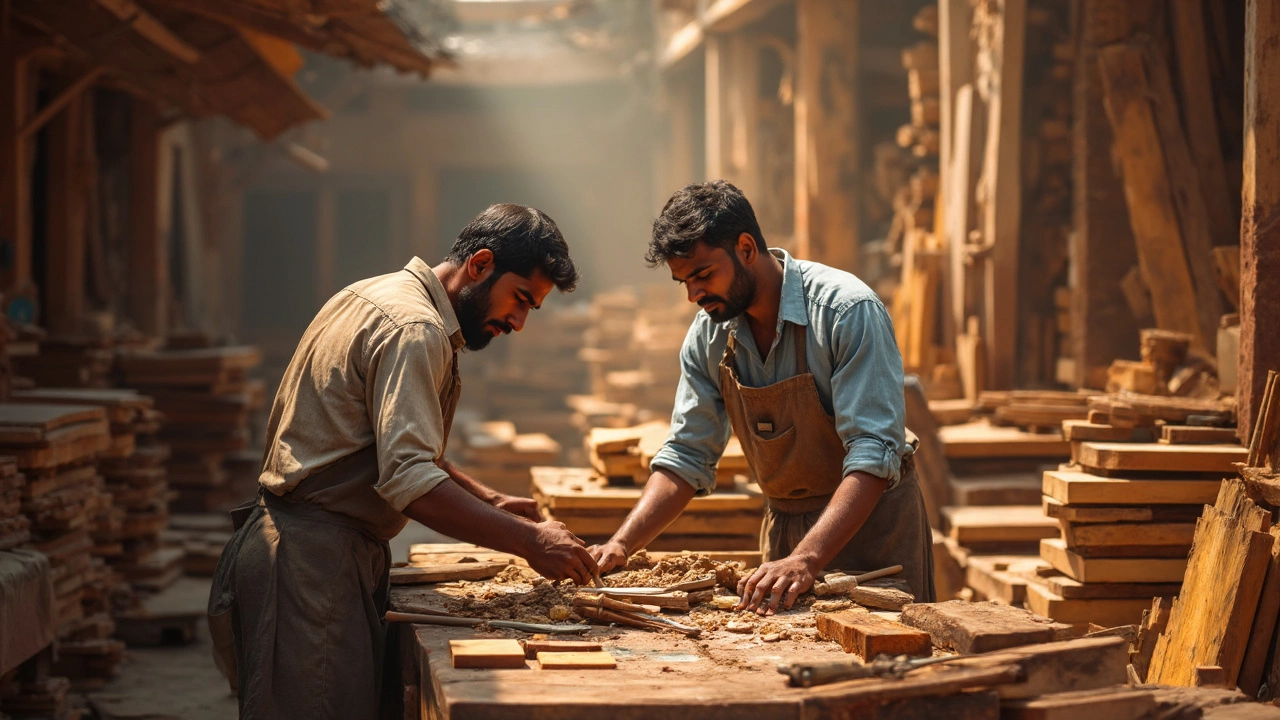Sheesham Wood: What It Is and Why It Matters
If you’ve walked into an Indian home and saw sturdy, dark‑brown furniture, chances are it’s made of sheesham. Also called Indian rosewood, sheesham comes from the Dalbergia sissoo tree that grows across the sub‑continent. Its natural grain gives a warm look, while its toughness makes it perfect for chairs, tables, and cabinets.
People love sheesham because it balances looks and strength. Unlike cheap pine that dents easily, sheesham can handle daily use without cracking. At the same time, it’s not as pricey as true teak, so it fits many budgets.
Top Uses for Sheesham Wood
When you’re picking furniture, look for sheesham in these spots:
- Dining sets: The grain hides scratches from plates and cutlery.
- Bedroom frames: Strong enough to support heavy mattresses.
- Outdoor pieces: With a proper seal, sheesham resists sun and rain better than most hardwoods.
- Decor items: Lamps, shoe racks, and wall art benefit from the wood’s natural shine.
Because the wood is dense, it also works well for musical instruments like guitars, where tone matters.
How to Keep Sheesham Looking Fresh
Even the toughest wood needs a little love. Here’s a quick routine:
- Dust regularly with a soft cloth – this prevents grit from scratching the surface.
- Apply a light oil (like coconut or linseed) once a year. The oil seeps into the pores, keeping the colour rich and stopping cracks.
- Avoid harsh chemicals. A mild soap solution is enough for cleaning spills.
- If you notice a small scratch, rub a bit of matching wood filler and smooth it with fine sandpaper.
These steps take just a few minutes but add years to the life of your pieces.
One thing to remember: sheesham expands and contracts with humidity. Try to keep indoor humidity between 40‑60% to stop warping. If you live in a very dry area, a humidifier can make a difference.
When buying, ask the seller about the source. Sustainable plantations now grow sheesham, so you can support eco‑friendly practices while getting quality timber.
In short, sheesham offers a mix of beauty, durability, and affordability. Whether you’re furnishing a new home or updating an old one, it’s a solid choice that ages gracefully. Keep it clean, oil it occasionally, and you’ll enjoy the warm glow of Indian rosewood for decades.

Best Trees for Furniture in India: The Top Choices for Quality Wood
Curious about which tree makes the best furniture in India? This article breaks down the top choices for furniture makers, including their pros and cons. You'll get practical tips on spotting genuine wood and advice from real craftsmen in the industry. Find out how climate, price, and wood availability shape what you see in showrooms. There's even a reality check on common myths and everyday mistakes buyers make.
